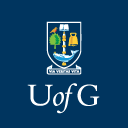When I visited the Louvre many years ago, I imagined many of the paintings came from lone artists grinding it out at their basements (that’s if they could afford basements), potentially gaining fame only posthumously.
It was a sad yet romantic image.
So, I was surprised when I learnt through “Fake or Fortune” that this romanticised view of historical artists was not the whole truth.
“Fake or Fortune” is a reality TV series by BBC, where a journalist and an art dealer joint forces to investigate the story behind master pieces (Note 1). In one episode, the duo were requested to find the original artist behind a painting titled “The Deposition of Christ from the Cross”. This painting has been housed in the Church of St John the Baptist in Port Glasgow, Scotland (Note 2).

“The Deposition of Christ from the Cross” - image from the website:  UofGlasgow Investigating a Flemish Old Master Painting
UofGlasgow Investigating a Flemish Old Master Painting
Through watching the investigation process, I learnt that during the late Medieval to Baroque periods (1300s - mid 1700s), many renowned artists in Europe were commissioned to create large-scale artworks for grand spaces like churches, palaces, and civic buildings. These works were often too complex and time-consuming for a single artist to complete alone, so the work was divided among a team from the Master artist’s workshop.
The Master artist typically sketched the overall composition and painted the key elements like faces, hands, or focal points. The Journeymen (someone like today’s freelancers) handled broader areas such as landscapes, drapery, or architecture. The apprentices worked on simpler sections under close supervision, gradually honing their craft within this structured system.
I had never thought of creative work as something that could be scaled. But with the right roles and responsibilities in place, it turns out that even a masterpiece can be a team effort.
The idea of scaling creative work reminded me of a conversation I had with a small business owner in Penang. He creates original art work which he prints on items like tote bags, key chains, t-shirts and magnets. Everything is sold through two retail outlets at tourist hotspots in Georgetown. The art work was authentic, and the souvenirs were of great quality. More people should know his work.

Photo of tote bag that I bought from his shop
So I asked: “Do you sell these online?”
He shook his head. “No. We only sell them in these two shops.”
“Why not? You could definitely sell more. These are beautiful stuff!”
He replied, “All the extra work will distract me from drawing; the quality will drop.”
His words stuck with me for a long time. He knows that he can scale. He doesn’t want to because the tradeoff isn’t worth it to him.
In my work, I often focus on how businesses can grow. But this reminded me: the question is whether they want to, and why not.
Creative work can be scaled. History has shown that. But the decision to do so rests on what the business values, and what it’s willing to give up.
Note 1: Details to the TV series, “Fake or Fortune”:  Wikipedia Fake or Fortune?
Wikipedia Fake or Fortune?
Note 2: Details of Episode 4 of Series 10 “Flemish Old Master”:  UofGlasgow Investigating a Flemish Old Master Painting
UofGlasgow Investigating a Flemish Old Master Painting
Photo of live plants in frame taken at Nakatsugawa - Magome taken during my recent trip in June 2025

/w=3840,quality=90,fit=scale-down)